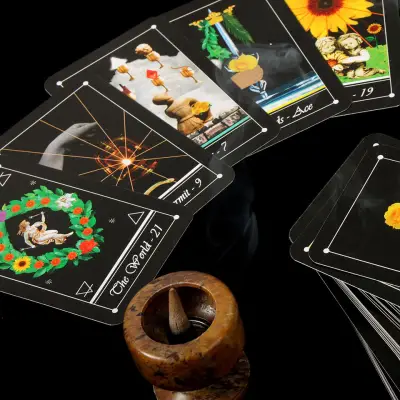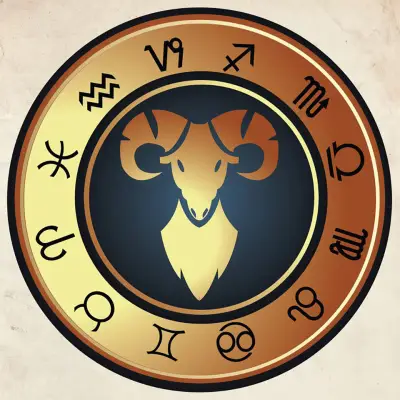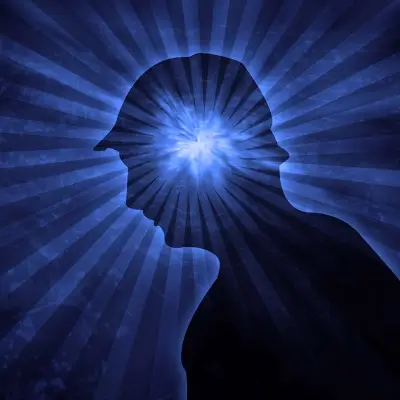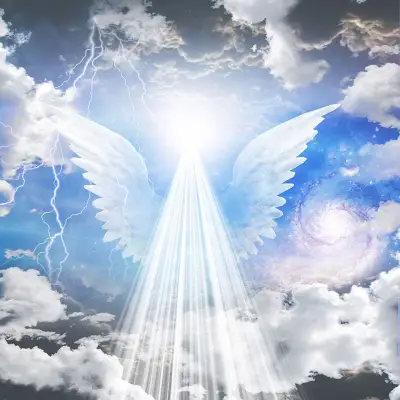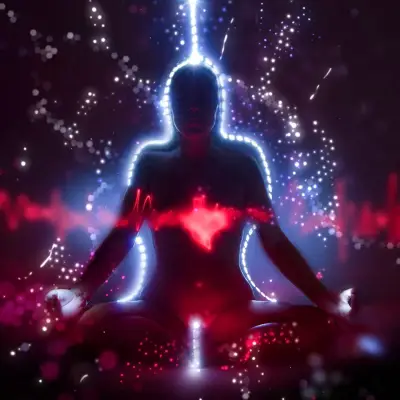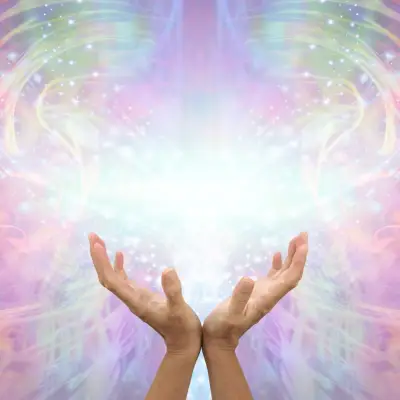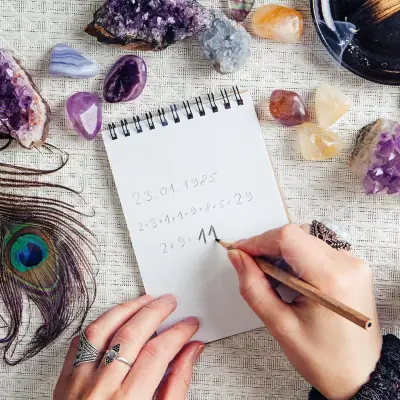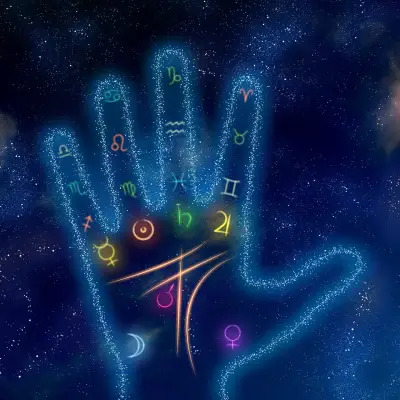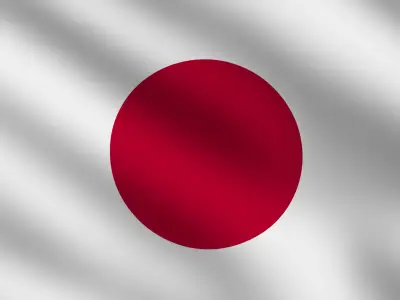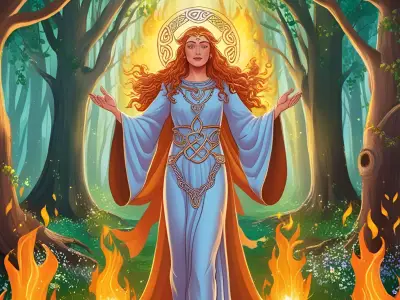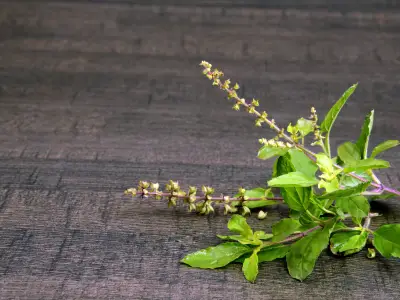The tarot deck is a captivating tool for self-discovery, reflection, and guidance. Its 78 cards, each with unique imagery and meanings, are steeped in symbolism and mystery. Whether you’re a seasoned reader or just starting, understanding these cards can transform how you interpret the world around you.
Jump to:
- The Structure of the Tarot Deck
- Major Arcana Cards and Their Meanings
- Minor Arcana Cards and Their Meanings
- Cups (Emotions and Relationships)
- Pentacles (Material Wealth and Career)
- Swords (Intellect and Challenges)
- Wands (Passion and Action)
- How to Use the 78 Tarot Cards
- Frequently Asked Questions About Tarot Cards
- Discover Tarot with Centre of Excellence
Recommended for you!
Best SellersThe Structure of the Tarot Deck
A traditional tarot deck consists of 78 cards divided into two sections:
- Major Arcana (22 cards): Representing significant life themes and spiritual lessons.
- Minor Arcana (56 cards): Focusing on day-to-day experiences and challenges, divided into four suits: Cups, Pentacles, Swords, and Wands.
Major Arcana Cards and Their Meanings
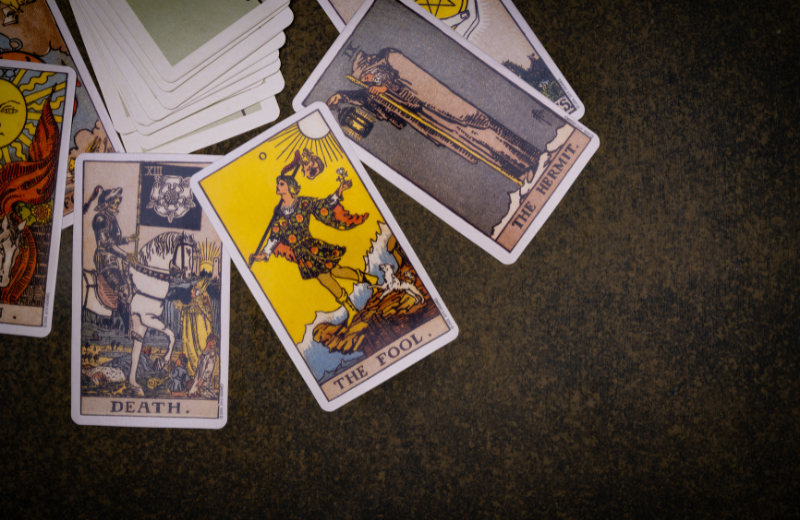
The Major Arcana are the heart of the tarot deck, representing life's significant moments, spiritual insights, and universal archetypes. Each card offers powerful wisdom and guidance, often delving into the bigger picture of your journey.
1. The Fool
The Fool symbolises the start of a new chapter or venture, filled with unlimited potential and opportunities. It encourages you to embrace spontaneity and take a leap of faith, trusting in the unknown. This card often represents innocence, optimism, and a willingness to explore without fear of failure.
2. The Magician
The Magician embodies the power of manifestation and creation. It urges you to recognise your inner resources—willpower, skills, and intellect—to achieve your goals. This card signifies taking action and harnessing your potential to turn dreams into reality. It’s a reminder that you already have everything you need to succeed.
3. The High Priestess
The High Priestess represents intuition, mystery, and the subconscious mind. It encourages you to look inward for answers and trust your instincts. This card suggests there are hidden truths waiting to be revealed, and only by quieting the mind can you uncover them.
4. The Empress
The Empress embodies abundance, creativity, and nurturing energy. It’s closely connected to nature, fertility, and growth. This card invites you to embrace your creative side and nurture yourself and others with kindness and love. It often signals a time of prosperity and comfort.
5. The Emperor
The Emperor represents authority, structure, and stability. It symbolises the power of discipline and leadership, encouraging you to take charge of your life and establish a strong foundation. This card often reflects a fatherly influence or a call to embody assertive, yet fair, control.
6. The Hierophant
The Hierophant is a symbol of tradition, spiritual guidance, and shared values. It often signifies seeking wisdom from a mentor, teacher, or institution. This card asks you to explore your beliefs and align with a greater purpose or community.
7. The Lovers
The Lovers card speaks of deep connections, harmony, and choices. While it often relates to romantic relationships, it can also represent important decisions that align with your values. This card highlights balance, mutual respect, and the power of unity.
8. The Chariot
The Chariot represents determination, control, and triumph over obstacles. It urges you to harness your focus and inner strength to overcome challenges. This card is a reminder that success comes from discipline and the ability to steer yourself in the right direction.
9. Strength
Strength is a card of courage, patience, and inner power. It suggests that true strength lies not in force, but in compassion and understanding. This card often appears when you need to approach a challenge with grace and resilience.
10. The Hermit
The Hermit symbolises introspection, solitude, and the pursuit of inner wisdom. It encourages you to take a step back from the noise of daily life to reflect and seek clarity. This card is a reminder that personal growth often comes from within.
11. Wheel of Fortune
The Wheel of Fortune reflects cycles, luck, and the ever-changing nature of life. It reminds you that ups and downs are natural and encourages you to embrace change with an open heart. This card often signals a turning point or a shift in circumstances.
12. Justice
Justice represents fairness, truth, and accountability. It encourages you to seek balance and make decisions with integrity. This card often appears when ethical choices or legal matters are at play, urging you to weigh all sides carefully.
13. The Hanged Man
The Hanged Man symbolises surrender, new perspectives, and letting go. It invites you to pause and reassess your situation, often requiring sacrifice or patience. This card encourages you to release control and trust the process.
14. Death
Death represents transformation, endings, and renewal. While often misunderstood, this card signifies the closure of one chapter and the beginning of another. It encourages you to embrace change and let go of what no longer serves you.
15. Temperance
Temperance is a card of balance, moderation, and harmony. It invites you to find equilibrium in your life by blending different elements in a way that fosters peace. This card often suggests patience and the ability to adapt.
16. The Devil
The Devil represents attachment, temptation, and materialism. It often highlights unhealthy habits, relationships, or beliefs that may be holding you back. This card encourages self-awareness and the courage to break free from limiting patterns.
17. The Tower
The Tower signifies sudden change, upheaval, and revelation. It often appears during times of disruption, but its message is one of liberation and growth. This card reminds you that even challenging moments lead to greater clarity and strength.
18. The Star
The Star is a card of hope, inspiration, and serenity. It encourages you to dream big and trust in the universe’s guidance. This card often appears as a beacon of light after a period of struggle, offering reassurance and renewal.
19. The Moon
The Moon reflects illusion, intuition, and uncertainty. It encourages you to explore your subconscious and trust your instincts when faced with confusion. This card often suggests that not everything is as it seems, urging you to look deeper for the truth.
20. The Sun
The Sun represents joy, success, and vitality. It is a card of positivity and abundance, encouraging you to embrace life with optimism. This card often signals a time of happiness, clarity, and personal growth.
21. Judgement
Judgement signifies reflection, awakening, and absolution. It invites you to evaluate your past actions and embrace personal transformation. This card often suggests a call to action or a moment of realisation that leads to a new chapter.
22. The World
The World symbolises completion, fulfilment, and accomplishment. It marks the end of a journey and the start of a new one, celebrating your achievements and growth. This card encourages you to embrace the wholeness of your experience.
Minor Arcana Cards and Their Meanings
The Minor Arcana consists of four suits, each containing 14 cards (Ace through 10, plus Page, Knight, Queen, and King). These cards cover everyday situations and personal experiences.
Cups (Emotions and Relationships)
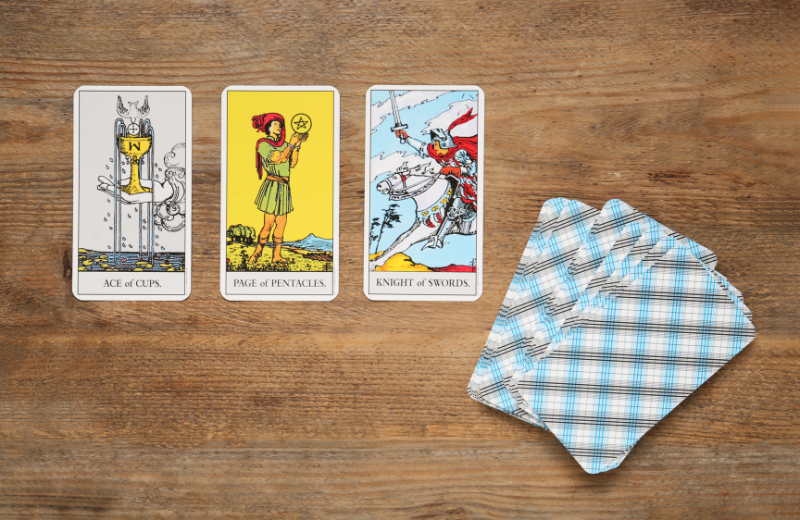
The suit of Cups in Tarot is associated with emotions, relationships, and matters of the heart. It reflects your inner world, your connections with others, and your creative and spiritual flow.
1. Ace of Cups
The Ace of Cups represents new emotional beginnings, such as the start of a loving relationship or a surge of creative energy. It’s a card of pure emotional potential, inviting you to open your heart and embrace feelings of joy, love, and intuition.
2. Two of Cups
The Two of Cups signifies partnership, harmony, and mutual respect. Often associated with romantic relationships, it also represents deep friendships and collaborations built on trust and shared emotions.
3. Three of Cups
The Three of Cups celebrates friendship, community, and joy. It symbolises gatherings and moments of shared happiness, reminding you to embrace the connections that uplift and support you.
4. Four of Cups
The Four of Cups reflects apathy or dissatisfaction, encouraging you to reassess your current emotional state. It suggests that opportunities may be overlooked due to discontent or lack of awareness.
5. Five of Cups
The Five of Cups represents loss and regret. It highlights the importance of processing emotional pain while encouraging you to recognise the potential for healing and moving forward.
6. Six of Cups
The Six of Cups evokes nostalgia and memories of the past. It often signifies kindness, generosity, and revisiting moments of childhood innocence or reconnecting with old friends.
7. Seven of Cups
The Seven of Cups presents choices, imagination, and illusions. It asks you to evaluate your options carefully, as not everything may be as it seems. It’s a call to balance dreams with practicality.
8. Eight of Cups
The Eight of Cups symbolises walking away from what no longer serves you. It’s a card of seeking deeper meaning, often indicating a need for personal growth or spiritual discovery.
9. Nine of Cups
The Nine of Cups is the card of fulfilment and gratitude. Often called the "wish card," it signals satisfaction and the realisation of your desires, encouraging you to savour the abundance in your life.
10. Ten of Cups
The Ten of Cups is a card of ultimate happiness and harmony. It represents emotional fulfilment within family, relationships, or community, symbolising a sense of contentment and love.
11. Page of Cups
The Page of Cups reflects curiosity, creativity, and emotional beginnings. It often appears when you’re inspired to explore new ideas or feelings with an open heart.
12. Knight of Cups
The Knight of Cups is a romantic and idealistic figure, representing charm, emotional exploration, and following your heart. It encourages you to pursue your passions with sincerity and purpose.
13. Queen of Cups
The Queen of Cups embodies compassion, intuition, and nurturing energy. She encourages you to trust your inner voice and offer care and understanding to yourself and others.
14. King of Cups
The King of Cups signifies emotional balance, maturity, and wisdom. He represents a stable and compassionate leader who guides others with kindness and integrity.
Pentacles (Material Wealth and Career)
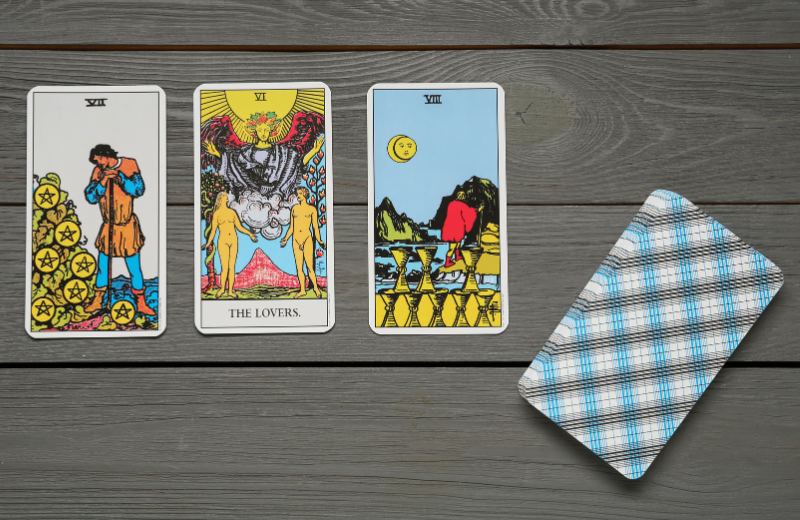
The suit of Pentacles is associated with the material world, including wealth, career, health, and practical matters. It often reflects how you navigate physical resources and goals.
1. Ace of Pentacles
The Ace of Pentacles signifies new opportunities in the material realm, such as a job offer, financial gain, or the start of a new project. It represents the seeds of prosperity waiting to be nurtured.
2. Two of Pentacles
The Two of Pentacles reflects balance and adaptability in managing multiple responsibilities. It encourages you to prioritise effectively and maintain harmony amidst challenges.
3. Three of Pentacles
The Three of Pentacles symbolises teamwork, collaboration, and skill-building. It highlights the importance of working with others to achieve shared goals and create something meaningful.
4. Four of Pentacles
The Four of Pentacles represents security, control, and holding onto resources. While it suggests stability, it also warns against being overly possessive or resistant to change.
5. Five of Pentacles
The Five of Pentacles reflects financial loss, insecurity, or hardship. It reminds you to seek support during challenging times and focus on rebuilding with resilience.
6. Six of Pentacles
The Six of Pentacles represents generosity, giving, and receiving. It highlights the flow of resources and encourages balanced exchanges of help, whether material or emotional.
7. Seven of Pentacles
The Seven of Pentacles reflects patience and long-term growth. It’s a card for assessing your progress and deciding whether to continue investing energy or adjust your approach.
8. Eight of Pentacles
The Eight of Pentacles is a card of skill development and dedication. It encourages you to work hard and hone your craft, suggesting that your efforts will lead to mastery and success.
9. Nine of Pentacles
The Nine of Pentacles signifies independence, luxury, and self-sufficiency. It reflects enjoying the fruits of your labour and celebrating personal achievements.
10. Ten of Pentacles
The Ten of Pentacles represents legacy, inheritance, and financial stability. It often symbolises long-term success, family harmony, and a sense of lasting security.
11. Page of Pentacles
The Page of Pentacles represents ambition, new ventures, and the willingness to learn. It signals a time of exploration in education, career, or personal development.
12. Knight of Pentacles
The Knight of Pentacles signifies responsibility, routine, and persistence. It encourages you to stay committed to your goals through steady and deliberate effort.
13. Queen of Pentacles
The Queen of Pentacles embodies practicality, nurturing, and resourcefulness. She encourages you to create a balanced and comfortable environment for yourself and those you care for.
14. King of Pentacles
The King of Pentacles symbolises wealth, leadership, and success. He represents someone who has mastered the material world and shares their abundance wisely and generously.
Swords (Intellect and Challenges)
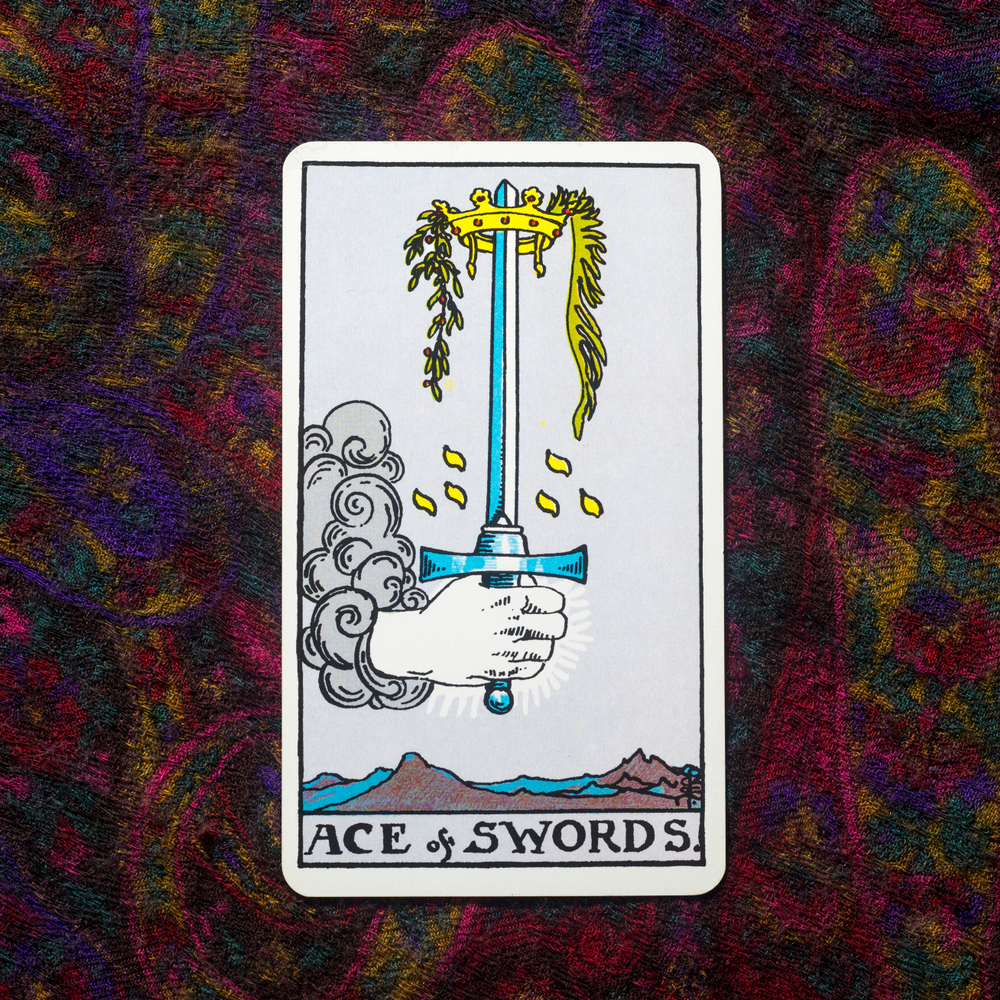
The suit of Swords represents intellect, communication, and challenges. It often focuses on thought processes, conflicts, and decisions, symbolising the power of the mind and the obstacles we must navigate.
1. Ace of Swords
The Ace of Swords symbolises clarity, truth, and breakthroughs. It heralds a moment of mental clarity or the discovery of an important truth. This card encourages you to use logic and decisiveness to cut through confusion and find solutions.
2. Two of Swords
The Two of Swords reflects indecision and a stalemate. It suggests being caught between two choices and needing to weigh your options carefully. This card invites you to trust your instincts when logic alone doesn’t provide answers.
3. Three of Swords
The Three of Swords represents heartbreak, sorrow, and emotional pain. Often associated with loss or betrayal, it urges you to confront your feelings honestly and take the first steps toward healing.
4. Four of Swords
The Four of Swords signifies rest, recovery, and introspection. It suggests a period of retreat to recharge and process recent events. This card encourages self-care and taking time to gain perspective.
5. Five of Swords
The Five of Swords highlights conflict, betrayal, and defeat. It warns against hollow victories and encourages you to consider whether winning at all costs is worth the consequences.
6. Six of Swords
The Six of Swords symbolises transition, moving forward, and healing. It often suggests leaving behind difficulties and journeying toward a calmer, more stable situation. This card emphasises growth and resilience.
7. Seven of Swords
The Seven of Swords represents deception, strategy, and cunning. It warns against dishonesty—whether it’s your own actions or those of others. This card suggests using strategy wisely while staying true to your values.
8. Eight of Swords
The Eight of Swords reflects restriction, fear, and self-doubt. It suggests feeling trapped by circumstances or your own mindset. This card reminds you that freedom often lies in shifting your perspective and reclaiming your power.
9. Nine of Swords
The Nine of Swords symbolises anxiety, worry, and nightmares. It often represents overthinking or being overwhelmed by fear. This card encourages you to address your concerns and seek support where needed.
10. Ten of Swords
The Ten of Swords represents endings and hitting rock bottom. While it can signify painful conclusions, it also offers hope for a fresh start. This card reminds you that every ending carries the seed of a new beginning.
11. Page of Swords
The Page of Swords embodies curiosity, intelligence, and new ideas. It encourages you to embrace learning and exploration, but also to consider the consequences of speaking or acting impulsively.
12. Knight of Swords
The Knight of Swords signifies action, ambition, and determination. It represents a single-minded pursuit of goals and warns against recklessness. This card invites focus and discipline as you move forward.
13. Queen of Swords
The Queen of Swords represents independence, clarity, and honesty. She encourages you to balance logic with compassion, standing firm in your truth while remaining open-minded.
14. King of Swords
The King of Swords symbolises authority, intellect, and leadership. He embodies clear thinking and fairness, urging you to make decisions based on reason and ethical principles.
Wands (Passion and Action)
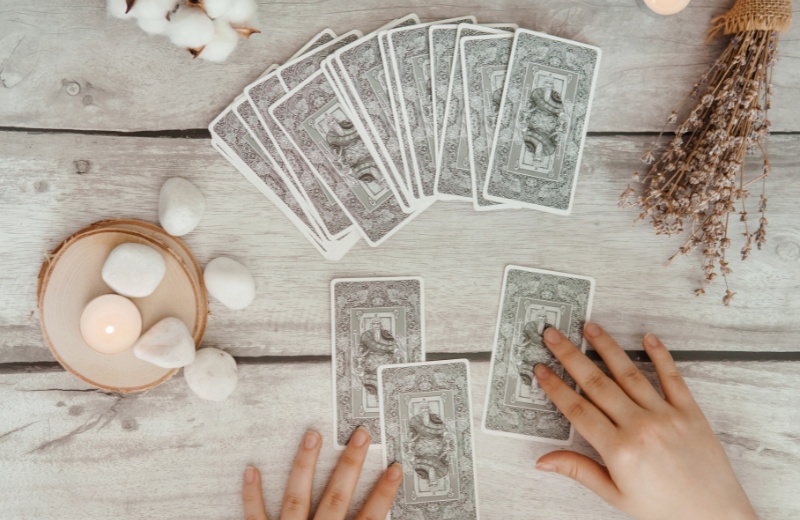
The suit of Wands is linked to passion, creativity, and action. It reflects ambition, energy, and the drive to bring ideas to life, often symbolising personal growth and inspiration.
1. Ace of Wands
The Ace of Wands represents inspiration, potential, and growth. It signals the start of an exciting new project or creative endeavour, urging you to seize opportunities with enthusiasm.
2. Two of Wands
The Two of Wands reflects planning, decisions, and progress. It suggests weighing options and preparing to take action toward long-term goals. This card invites you to step out of your comfort zone.
3. Three of Wands
The Three of Wands symbolises expansion, foresight, and opportunities. It encourages you to look ahead and explore new possibilities, trusting that your efforts will lead to success.
4. Four of Wands
The Four of Wands signifies celebration, home, and stability. It often represents milestones or joyful events, such as weddings or reunions, and encourages you to savour moments of happiness.
5. Five of Wands
The Five of Wands highlights competition, conflict, and struggle. It suggests a time of clashing ideas or challenges that require collaboration and persistence to overcome.
6. Six of Wands
The Six of Wands symbolises success, recognition, and victory. It reflects achieving your goals and being acknowledged for your efforts, encouraging you to celebrate your accomplishments.
7. Seven of Wands
The Seven of Wands represents defence, perseverance, and standing your ground. It suggests facing challenges or opposition with confidence and resilience, holding firm to your beliefs.
8. Eight of Wands
The Eight of Wands reflects speed, action, and movement. It signifies rapid progress or sudden developments, encouraging you to embrace change and act decisively.
9. Nine of Wands
The Nine of Wands symbolises resilience, courage, and persistence. It suggests you are near the end of a challenging journey, urging you to stay strong and keep pushing forward.
10. Ten of Wands
The Ten of Wands represents burden, responsibility, and hard work. It warns against taking on too much and encourages you to delegate or seek help to lighten your load.
11. Page of Wands
The Page of Wands embodies enthusiasm, discovery, and potential. It encourages you to embrace new opportunities and approach life with curiosity and excitement.
12. Knight of Wands
The Knight of Wands represents passion, adventure, and energy. It reflects pursuing your dreams with boldness and reminds you to channel your enthusiasm in constructive ways.
13. Queen of Wands
The Queen of Wands signifies confidence, determination, and independence. She inspires you to lead with strength and creativity, embodying warmth and charisma.
14. King of Wands
The King of Wands symbolises leadership, vision, and inspiration. He encourages you to take charge of your life and pursue your ambitions with confidence and purpose.
How to Use the 78 Tarot Cards
Using tarot effectively starts with practice and familiarity. With these steps, you can build a strong foundation and confidently interpret all 78 cards.
- Familiarise Yourself with the Deck: Spend time exploring the imagery and symbols of each card, noting your thoughts and feelings. Keeping a tarot journal can help you track your interpretations and deepen your understanding.
- Start with Daily Card Draws: Pull one card each day to reflect on its meaning and how it applies to your life. This simple exercise helps you connect with the deck and build confidence.
- Use Simple Spreads: Begin with three-card spreads, such as Past-Present-Future or Mind-Body-Spirit. These layouts are manageable for beginners and provide valuable insights.
- Trust Your Intuition: While traditional meanings are important, allow your instincts to guide your interpretations. Often, your gut feeling will reveal additional layers of meaning.
- Ask Open-Ended Questions: Formulate questions that encourage deeper insights, like “What can I learn from this situation?” rather than seeking yes/no answers. This approach unlocks the cards’ full guidance.
- Reflect and Record: After each reading, write down the cards and your interpretations in a journal. Over time, this practice helps you develop your unique understanding of the tarot.
- Practice Regularly: Engage with your tarot deck consistently to build familiarity and confidence. Even a few minutes each day can make a significant difference.
Recommended for you!
Best SellersFrequently Asked Questions About Tarot Cards
What is the purpose of tarot cards?
Tarot cards are used as a tool for self-reflection, guidance, and exploring life's challenges and opportunities. They provide insights into your current situation and potential future outcomes based on your choices and energy.
What is the difference between tarot and oracle cards?
Tarot cards follow a structured system with 78 cards and specific meanings. Oracle cards, on the other hand, are more free-form, varying in number and themes, often focusing on specific topics or energies chosen by the creator. Read more about Tarot vs Oracle cards.
What is the most powerful tarot card?
While interpretations vary, The World, The Sun, and The Magician are often considered among the most powerful cards due to their messages of completion, joy, and manifestation. Ultimately, the "most powerful" card depends on the context of the reading.
Which tarot cards are best for love readings?
Cards like The Lovers, Two of Cups, and Ten of Cups often appear in love readings, symbolising harmony, deep connections, and emotional fulfilment. However, any card can provide meaningful insights into relationships depending on the question asked.
Can tarot predict the future?
Tarot does not predict the future with certainty but offers guidance on potential outcomes based on current energies. It encourages self-awareness and helps you make informed decisions.
What is the most protective tarot card?
The Strength card is often seen as protective, symbolising inner resilience and the ability to face challenges with grace. Similarly, The Star provides reassurance and hope during difficult times.
What does it mean when tarot cards appear reversed?
Reversed cards can indicate blocked energy, challenges, or the opposite of the upright meaning. However, not all readers use reversed meanings; it’s a personal choice.
Should I pull tarot cards every day?
Daily card pulls are a great way to build your tarot skills and connect with your deck. They offer small, actionable insights to guide your day while deepening your understanding of each card.
Are tarot readings always accurate?
Tarot accuracy depends on the reader’s skill, intuition, and the clarity of the question being asked. The cards reflect current energies and possibilities, but outcomes may change based on actions and decisions.
Can anyone learn tarot?
Absolutely! Tarot is accessible to everyone, regardless of experience. With practice, patience, and an open mind, anyone can learn to use tarot effectively.
What should I do if I don’t understand a tarot reading?
If a reading feels unclear, take time to reflect on the cards and their positions. Sometimes, the meaning becomes apparent later as events unfold. Journaling your interpretations can help you track these connections over time.
Is tarot related to any specific religion?
Tarot is not tied to a particular religion. While it has historical roots in mysticism and esoteric traditions, it is often used as a spiritual tool that transcends religious boundaries.
How do I choose the right tarot deck?
Select a deck that resonates with you visually and emotionally. Popular beginner decks include the Rider-Waite-Smith tarot due to its accessible imagery and symbolism. Explore different styles until you find one that feels right.
Do I need to cleanse my tarot deck?
Can I read tarot for myself?
Reading tarot for yourself is a great way to gain insight and build your skills. Approach your readings with an open mind and avoid over-reading on emotionally charged topics.
What should I do if I draw “negative” cards?
"Negative" cards, like Death or The Tower, often represent necessary changes, challenges, or growth rather than literal misfortune. They are opportunities to reflect and make positive adjustments in your life.
Is tarot considered witchcraft?
Tarot is not inherently witchcraft. While some practitioners use tarot in spiritual or magical practices, many use it as a tool for self-reflection and personal growth without any connection to witchcraft.
Discover Tarot with Centre of Excellence
If you’re inspired to deepen your tarot knowledge, the Tarot Diploma Course from Centre of Excellence is an ideal next step. This fascinating course helps you explore all 78 tarot cards in detail, teaching you how to give insightful readings. Learn at your own pace, benefit from a private tutor, and test your knowledge with structured assessments. Sign up today for only £29!

